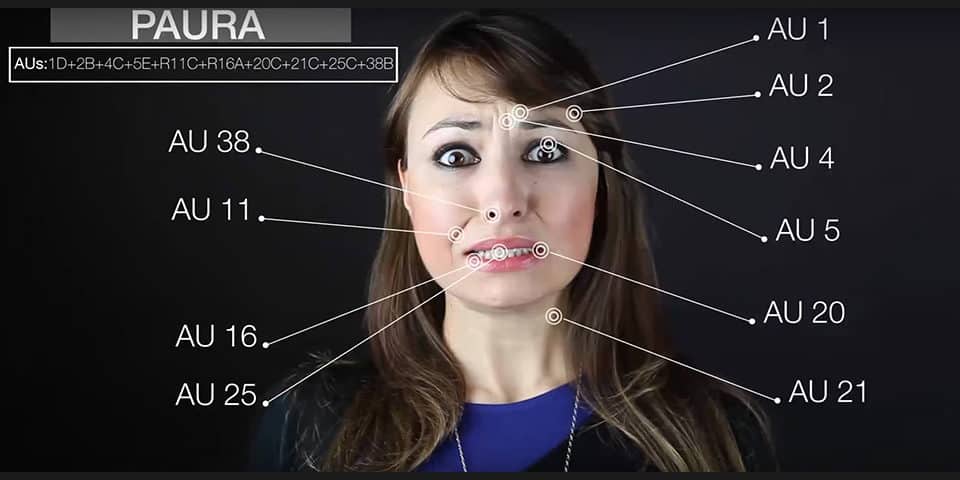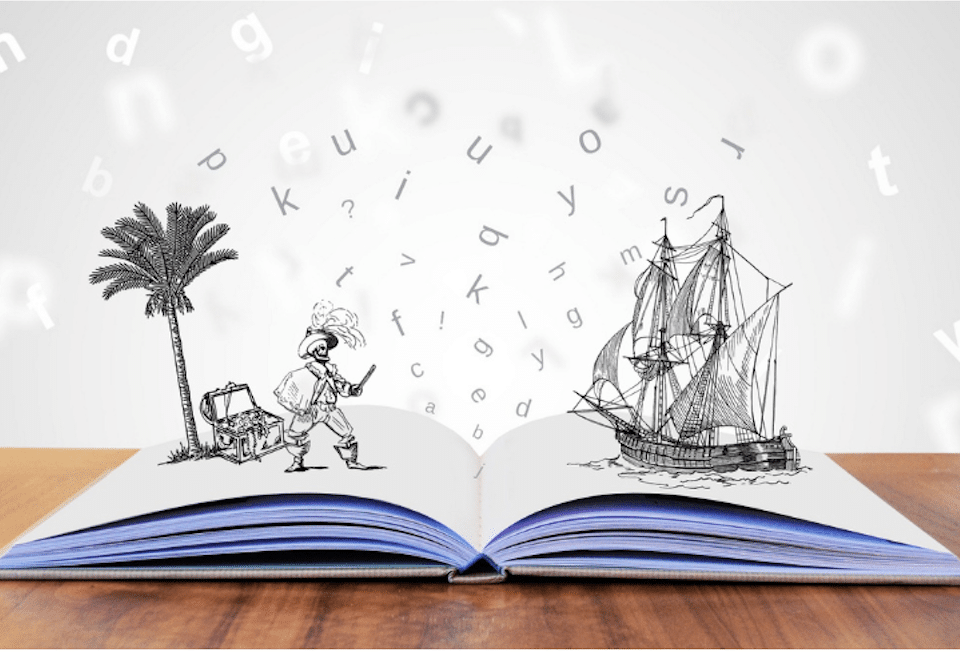THE RELATIONSHIP IN COLORS – The Persuasive Communicator™
16 March 2017
Ulysses, Athena and Pinocchio’s nose
7 May 2017FACS: an atlas for exploring emotions through the face

The face is the first thing we look at in others, it is the first expressive channel through which we convey the emotions we feel, our attitude, our propensity to act and communicate.
We can show sadness, anger, fear, or disgust, contempt, sometimes surprise, and as many as 16 different types of emotions related to happiness.
What happens when we try to hide our emotions from others? Attempting to conceal the onset of an emotion, or to lie openly, allows valuable information to leak out through our faces. These involuntary expressions, which often last only fractions of a second, are called ‘micro-expressions’.
Emotional expressions do not always manifest themselves entirely on the face, sometimes they affect only a part of it; we speak in these cases of partial or subtle expressions, which can also emerge in the form of micro expressions. In the same way they communicate to us what the interlocutor is really feeling.
The non-verbal way of communicating feelings plays an important role in our most intimate relationships. John Gottman, in a ten-year longitudinal study, showed that 87% of the couples observed, who displayed micro facial expressions of contempt and disgust towards their partner, divorced within 4 to 6 years.
Why is the occurrence of these two emotions (and related micro facial expressions) so important in couple relationships? Disgust is an emotion linked to sensory and cognitive repulsion, whereby those who experience it tend to distance themselves from an object (or a person, or a thought expressed by someone) that they consider ‘poisonous’ or contaminating. The manifestation of this emotion, especially in the sexual sphere, defuses any physical attraction towards the partner and thus creates both a physical and mental distance.
Contempt, on the other hand, communicates a sense of moral superiority over the other, who is thus relegated to an inferior role, less deserving of our time and attention. A relationship set up in this way creates asymmetry and inequality, dehumanises the other person by placing them on a ‘lower step’ than us. Respect for the person next to us in such cases is lost, threatening at the root the possibility of establishing a constructive relationship.
When contempt manifests itself within the work context, it creates tension and disharmony. In hierarchical relationships it can mean a lack of recognition of the role and disesteem, latent conflicts that can prelude the break-up of a relationship or the onset of serious inefficiencies. For this reason, it would be providential to be able to recognise expressions of contempt in good time and thus be able to manage the relationship effectively.
The face and its rapid movements are thus the main way to intuit the other’s possible behavioural choices. These valuable indicators, often manifested involuntarily and very quickly, inform us about our interlocutor’s reactions. We can thus understand whether he/she is in agreement with us, or doubtful or frightened by our proposal; happy or angry at our presence.
Facial expressions can tell us when someone feels an emotion, but the fact remains that it is difficult to establish, without asking questions, the direct cause of the emotion felt by the interlocutor. Another aspect concerns the peculiar characteristics of each individual, called ‘baselines’. A person may perform habitual behaviours that are not necessarily related to a precise meaning (e.g. certain facial expressions such as: frowning; sucking the lips into the mouth; wrinkling the nose when laughing; lifting the upper lip when verbally pronouncing certain vowels or consonants).
Learning to identify emotion-related micro-expressions is important for many reasons:
- Increasing Emotional Intelligence: one of the keys to improving emotional intelligence is to develop the ability to pick up movements in people’s faces. Unlike language, the face constitutes a universal system of signals that reflect people’s fluctuating feelings, moment by moment. Knowing how to read the face helps one recognise one’s own emotions and those of others.
- Increasing empathy: emotions play a central role in all our interactions. Common facial expressions, or macro-expressions, often portray a person’s feelings at a given moment not quite accurately. When one is able to recognise micro expressions, one becomes more sensitive to the emotions that others are feeling and that they wish or do not wish to make known. One can also determine the moment when a certain emotion begins, or when it is hidden, or even when a person is unaware of what he or she is feeling.
- Understanding others and granting trust: Paul Ekman’s research has shown that there are facial expressions that sometimes contradict the words spoken, and that are indicators to be investigated in the context of credibility/ lying. Knowing how to recognise them accurately is tantamount to finding a focal point to investigate through targeted questions.
- Improving Relationships: Recognising the emotions of others increases the ability to create intimacy and understanding in the relationship. People who are able to identify micro-expressions, according to the latest research in the field of non-verbal communication, are generally preferred as colleagues or co-workers, and get ahead more quickly.
The ability to read the face helps one recognise one’s own emotions and those of others.
The ability to recognise the micro-expressions is also important.
.
But how can we tell which precise muscle actions are involved in these important facial expressions? How can we assess the intensity of emotions through a precise reading of facial muscles?
The most famous and reliable method for reading facial expressions is the Facial Action Coding System (FACS). FACS is an all-encompassing atlas of facial muscle actions, as well as a method of investigation that transforms the human observer, i.e. the FACS Certified Coder, into a technical expert in analysing people’s facial expressions.
Created by Paul Ekman and Wallace V. Friesen, this fascinating tool makes it possible to encode every possible mimicry manifested by the human face (which muscle actions are activated and in what intensity).
Its scientific applications find use in psychological and ethological research, or in the drafting of any validable technical reports (e.g. in the field of forensic psychology) or in the processing of digital animations (the database of facial expressions used by Disney-Pixar in its most recent cartoons was structured thanks to FACS and the valuable advice of Prof. Paul Ekman).
However, the face is only the first of the five channels of expression analysed by those using Paul Ekman’s scientific method. Those who are professionally trained in the ESaC (Emotional Skills and Competencies) and ETaC (Evaluating Truthfulness and Credibility) methods are in fact able at the same time to analyse in the interlocutor:
- .
- the facial expressions;
- the body language;
- the voice;
- the verbal style;
- the verbal content (what he/she says);
Specialising on only one of these channels of communication confronts us with obvious limitations, since much of the information transmitted by our Central (and Autonomous) Nervous System manifests itself in the form of complex behaviours (verbal, para-verbal and non-verbal), covering the entire expressive area of the person. Just think how much voice oscillations can vary with the onset of strong emotions; how much our gestures, the postures we assume, the visible neurophysiological reactions (pallor, redness, horripilation, etc.), can be decisive for the purposes of emotional-behavioural investigation.
Paul Ekman himself reminds us that, to date, the human is the most reliable instrument in the coding and interpretation of human behaviour (compared to automatic coding software, it is better able to trace the baseline of the person’s face and body language, as well as better contextualising the communicative variables emitted). But even the human observer, without adequate training on ‘how’ and ‘what’ to look at, could rely solely on instinct, the sixth sense, chance or luck.


